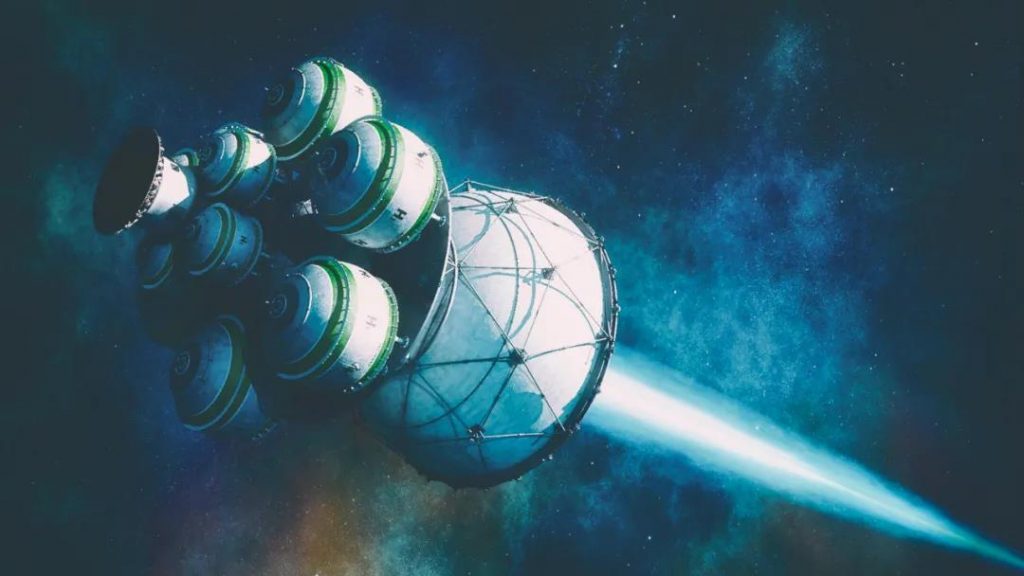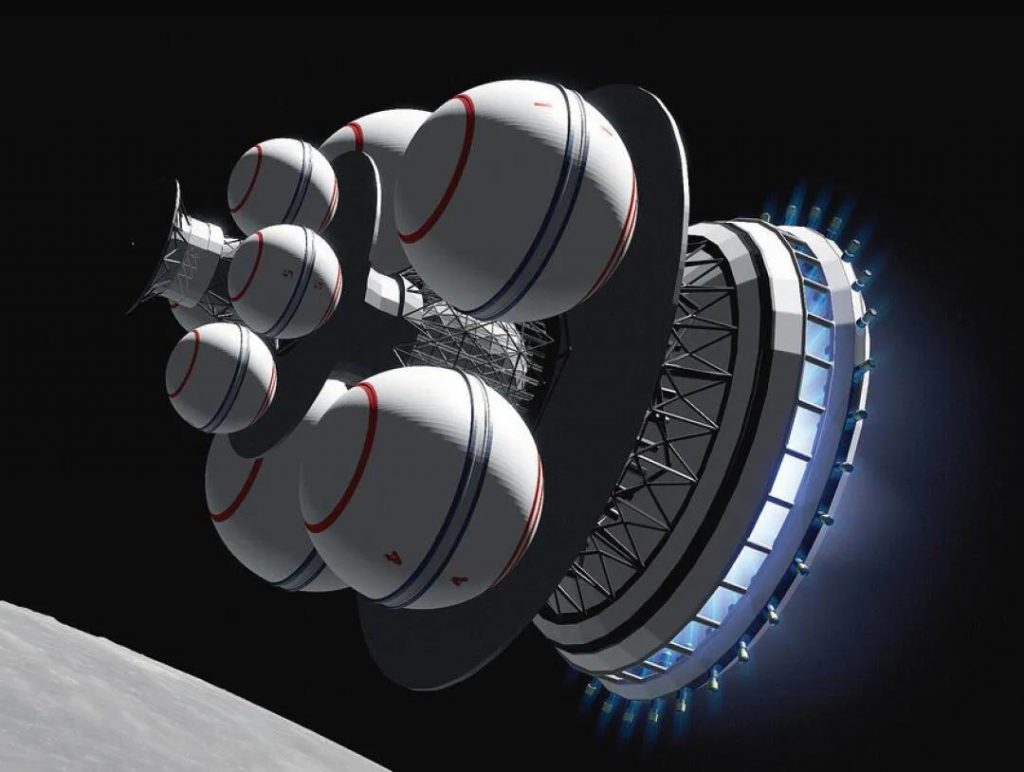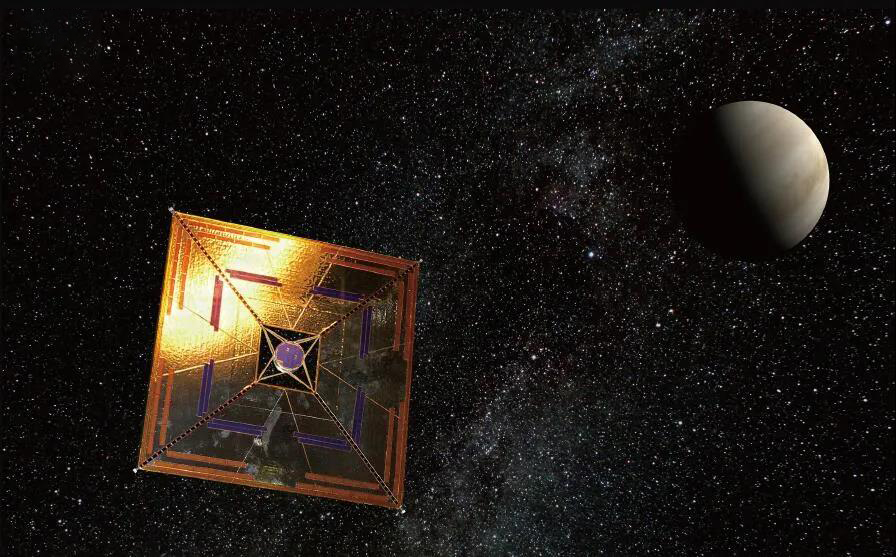
Space is vast and empty-the planets and stars are far apart, and there is nothing in the air between the stars, almost a vacuum. Moreover, the gravity in space is weak, and the objects are floating.
It seems that as long as a light push, the object can easily fly away, and there is no air resistance, it seems that it is not difficult to move at high speed in space.
But the reality is not the case, so some people raised the question: Why can’t human aircraft accelerate in space easily and achieve the speed of light? This article will explain this problem from several aspects.
Traditional rocket propulsion is impossible totally!
It is actually a false impression that we can push objects in space with a single push. According to Newton’s second law F=ma, for an object of certain mass to obtain a high acceleration, a large external force must be given to the object.
This law also holds in space. This shows that although the object is suspended in space, it is not so easy to make it move quickly, because the huge thrust is not obtained easily.

At present, the only tool that can help humans break through the constraints of the earth’s gravity and enter space is a rocket. The reason why the aircraft can fly is that the tail rocket burns and ejects gas, so that it can gain recoil.
To obtain sustained acceleration, there must be enough rocket fuel. However, if the final speed is increased by increasing the fuel load, the increase in fuel quality is much greater than the increase in the final aircraft speed.
Because the rocket is propelled in stages, a lot of fuel is used to accelerate the rocket itself. For example, suppose there are 100 rockets installed behind the aircraft. The last rocket is used to accelerate all the previous rockets (99 at this time) and the aircraft itself.
After the last rocket fell off, the penultimate rocket faced the same problem, and so on. Therefore, the quality of the rocket itself is a very heavy burden.
Therefore, the effect of increasing the mass of the rocket is not good. An example can illustrate this point-assuming that the mass of the aircraft is m fly, the mass of fuel (that is, the total mass of all rockets) is m combustion, take a typical chemical rocket with an exhaust gas ejection velocity of 2600 m/s as an example: When m-burning/m-flying=1, the fuel is as heavy as the mass of the aircraft, and the aircraft can eventually be accelerated to 1802 m/s; but when m-burning/m-flying=100, the fuel mass is 100 times that of the aircraft, Eventually it can be accelerated to 12000 m/s.
It can be seen that even if the mass of the rocket is increased by 100 times, it can often only bring a few times the speed increase, and this cost performance is very low.
Some experts have calculated that: assuming that the speed of an aircraft is only 1 gram, to accelerate this 1 gram aircraft to 0.2 times the speed of light, the mass of chemical fuel required is far greater than the mass of the universe that can be observed so far.
Moreover, even if humans can build extremely huge rockets, the amount of engineering required to build the infrastructure for rocket launches is quite large.
“Dedalus” Project
Traditional fuel is not feasible, so what about using nuclear fuel? Nuclear reactions are divided into nuclear fission and nuclear fusion. Some very massive atoms like uranium, thorium, and plutonium have their nuclei split into two or several smaller nuclei after absorbing a neutron, and at the same time they emit 2-3 neutrons and huge energy.
This is Nuclear fission. Nuclear fusion is the process of combining light nuclei (such as deuterium and tritium) into heavier nuclei (such as helium) and releasing huge amounts of energy.
The power of nuclear reaction is much greater than that of traditional chemical fuel combustion, which can provide a huge recoil for aircraft. So, which nuclear reaction method is better to use? From the point of view of material sources, uranium, thorium, and plutonium contain very little in nature, while the content of deuterium and tritium is large, reaching 10 trillion tons.
From an environmental point of view, nuclear fission will produce a lot of nuclear waste and cause great environmental pollution. With good control, nuclear fusion can be basically radiation-free.

As a result, in the mid-1970s, British scientists proposed the “Dedalus” plan, which uses a nuclear fusion rocket as a propulsion method to accelerate the vehicle to near the speed of light, and it can detect nearby stars within a few decades.
The plan is to build a 190-meter-long spacecraft with a total mass of 54,000 tons, of which the weight of the rocket is 50,000 tons and the payload is 450 tons. The rocket is a two-stage rocket, so the acceleration process is divided into two stages. The first stage will last for 2.2 years, and the first stage rocket will be responsible for the acceleration, so that the spacecraft will reach 7.1% of the speed of light.
The second stage will last 1.8 years, and the second stage rocket will be responsible for the acceleration, and finally the spacecraft will reach 12% of the speed of light. Then shut down the engine and proceeded for 46 years of cruise. After a total of 50 years, the aircraft will be able to reach one of the closest stars to us-Barnard’s Star, which is about 6 light-years away from Earth.
Not to mention how to obtain 50,000 tons of nuclear fuel, it is quite difficult to manufacture a 50,000 tons of nuclear-powered rocket itself. The heaviest rocket manufactured by mankind is the “Saturn 5” carrier rocket currently, which is only 2,900 tons.
Talking about the “Dedalus” plan now is tantamount to “talking on paper” and is not yet feasible.
Of course, human beings will not stop imagining, and more novel acceleration methods of light sails and gravitational slingshots have been proposed.
Light Sail and Gravitational Slingshot
The sail bears the wind and drives the sailboat forward. So for windsurfing, the wind is the driving force of the sail. As the name suggests, light sail is a sail powered by light. Why is light energy used as power? Light is composed of photons.
Although photons have no static mass, photons have momentum and they fly at the speed of light. When a photon hits a smooth surface, it can change the direction of motion like a ping-pong ball bounced off a wall, and give the hit object a corresponding force.
Experts said that using light sail technology to accelerate a 1 gram object to 20% of the speed of light, it also requires the energy equivalent of more than 400 tons of TNT explosives.
This also means that the energy of the “fat” atomic bomb dropped by the US military on Nagasaki, Japan during World War II could only accelerate an object of 50 grams to 20% of the speed of light. It can be seen that energy consumption is one of the problems of Guangfan technology.
The light sail technology also faces another problem-human beings use the laser light emitted on the earth to provide photons to the light sail, so the area of the light sail must be large enough to effectively receive the photons. In addition, the quality of the light sail should be as small as possible, which means that the light sail must be made very thin.
Some people have calculated that the thickness of the light sail should be as low as tens of nanometers in order to greatly save energy. How to ensure that the light sail will not be burned under such a thin condition is also a problem.

In addition to using light sails, some people suggest using a gravitational slingshot to accelerate the aircraft. Gravitational slingshots use the gravity of celestial bodies (planets, stars, or black holes).
When the aircraft flies toward the oncoming celestial body and enters the specific orbit of the celestial body, it can achieve a 360-degree rotation and fly out at a greater speed in the direction almost opposite to the initial speed.
The related theory of this method is still being verified. Flying to a large distant celestial body is a huge energy-consuming project. However, the greater difficulty lies in the difficulty of the aircraft to enter the specific orbit of the celestial body.
Can objects fly at the speed of light really?
At present, the most powerful particle accelerator can only accelerate charged particles to 99% of the speed of light. What is the situation here? This is restricted by the theory of relativity. In classical physics, the mass of an object is constant, but in the theory of relativity, the mass of an object changes with the change of speed.
Suppose that the mass of an object at rest is m0 and the mass when moving is m. When the speed is v, m=m0/(1-v2/c2) 1/2. According to this formula, if v is close to the speed of light, then 1-v2/c2 is close to 0, and m becomes infinite. A particle with infinite mass cannot be accelerated by an accelerator.
Even if an aircraft can be accelerated to the speed of light, based on the above, it is easy to know that the energy of the entire universe may not be able to reach the minimum energy required to accelerate to the speed of light.
Moreover, an object moving at the speed of light, even an atom, can have a very large impact on it. Sooner or later, the object will be crushed into small nanoparticles that can no longer be hit by other particles.
At present, the only substances that can move at the speed of light are electromagnetic waves, and light waves are one type of electromagnetic waves. Electromagnetic waves are composed of photons that cannot move at a frequency, and the rest mass of photons is zero.
In other words, at present, only massless objects can reach the speed of light, and mass objects cannot accelerate to the speed of light.
Comments